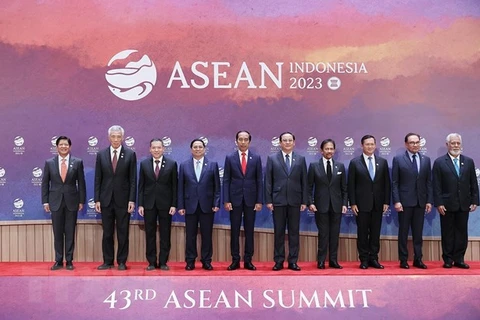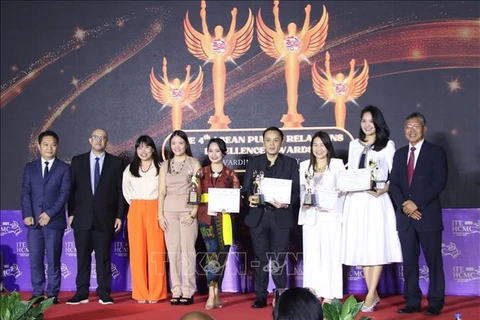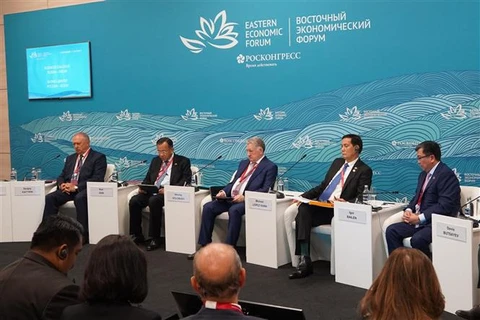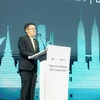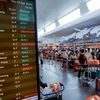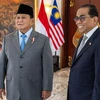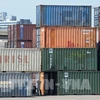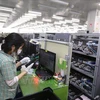Sydney (VNA) – Melissa Conley Tyler, Honorary Fellow of the Asia Institute under the University of Melbourne, has highlighted economic cooperation between the Association of Southeast Asian Nations (ASEAN) and Australia in her recent article published on the website The Conversation.
Tyler said Australian Prime Minister Anthony Albanese has released the country's Southeast Asia Economic Strategy to 2040, which sets a more active government role in promoting trade and investment links.
“While Australia is using all elements of statecraft to build strong defence, diplomacy and development relationships with a crucial region, there’s a gap where economic activity should be. This strategy aims to redress that,” the article read.
Despite the region's 687 million people and expanding middle class, Australia’s level of economic engagement with Southeast Asia has remained stubbornly low, the author pointed out.
She cited statistics showing Australia’s direct investment in New Zealand is more than in the whole of dynamic Southeast Asia.
“The region as a whole is forecast to average growth of 4% to 2040. This means it will become the world’s fourth-largest economy by 2040, after the United States, China and India,” she noted.
Australian governments have actually been trying for a long time to get Australian businesses interested in Southeast Asia, she said, adding that there has been a trade agreement in place with ASEAN since 2010, which was recently upgraded.
However, in recent years, Australia’s investment in Southeast Asia has been going down rather than up, against global trends.
“Given greater economic engagement is not happening naturally, the new strategy sets out a much more active role for government in helping companies diversify into Southeast Asia,” the article noted, adding the strategy is not only exhorting Australian businesses to do better, but also sets out ways government can actively remove blockages and lessen risks.
“The strategy sees a role for government in providing seed funding. For example, working with industry to fund a Southeast Asia research grants scheme and establishing a targeted program to support Australian First Nations businesses to increase trade and investment with the region,” Tyler continued.
In the important area of infrastructure – where Southeast Asia will require an estimated 3 trillion USD in investment to 2040 – it suggests Australia can play a role in early-stage project preparation.
To give a sense of the untapped potential, currently only 250 exporters make up 90% of Australia’s merchandise exports to Southeast Asia. There is a lot of room for other companies to get involved.
“Australia will gain strategic benefits from stronger economic engagement with Southeast Asia. Imagine the change in relations if Australia became a key partner in the region’s green economy transition or in building much-needed infrastructure. This would transform the way the region and Australia view each other,” article concluded./.
Tyler said Australian Prime Minister Anthony Albanese has released the country's Southeast Asia Economic Strategy to 2040, which sets a more active government role in promoting trade and investment links.
“While Australia is using all elements of statecraft to build strong defence, diplomacy and development relationships with a crucial region, there’s a gap where economic activity should be. This strategy aims to redress that,” the article read.
Despite the region's 687 million people and expanding middle class, Australia’s level of economic engagement with Southeast Asia has remained stubbornly low, the author pointed out.
She cited statistics showing Australia’s direct investment in New Zealand is more than in the whole of dynamic Southeast Asia.
“The region as a whole is forecast to average growth of 4% to 2040. This means it will become the world’s fourth-largest economy by 2040, after the United States, China and India,” she noted.
Australian governments have actually been trying for a long time to get Australian businesses interested in Southeast Asia, she said, adding that there has been a trade agreement in place with ASEAN since 2010, which was recently upgraded.
However, in recent years, Australia’s investment in Southeast Asia has been going down rather than up, against global trends.
“Given greater economic engagement is not happening naturally, the new strategy sets out a much more active role for government in helping companies diversify into Southeast Asia,” the article noted, adding the strategy is not only exhorting Australian businesses to do better, but also sets out ways government can actively remove blockages and lessen risks.
“The strategy sees a role for government in providing seed funding. For example, working with industry to fund a Southeast Asia research grants scheme and establishing a targeted program to support Australian First Nations businesses to increase trade and investment with the region,” Tyler continued.
In the important area of infrastructure – where Southeast Asia will require an estimated 3 trillion USD in investment to 2040 – it suggests Australia can play a role in early-stage project preparation.
To give a sense of the untapped potential, currently only 250 exporters make up 90% of Australia’s merchandise exports to Southeast Asia. There is a lot of room for other companies to get involved.
“Australia will gain strategic benefits from stronger economic engagement with Southeast Asia. Imagine the change in relations if Australia became a key partner in the region’s green economy transition or in building much-needed infrastructure. This would transform the way the region and Australia view each other,” article concluded./.
VNA

